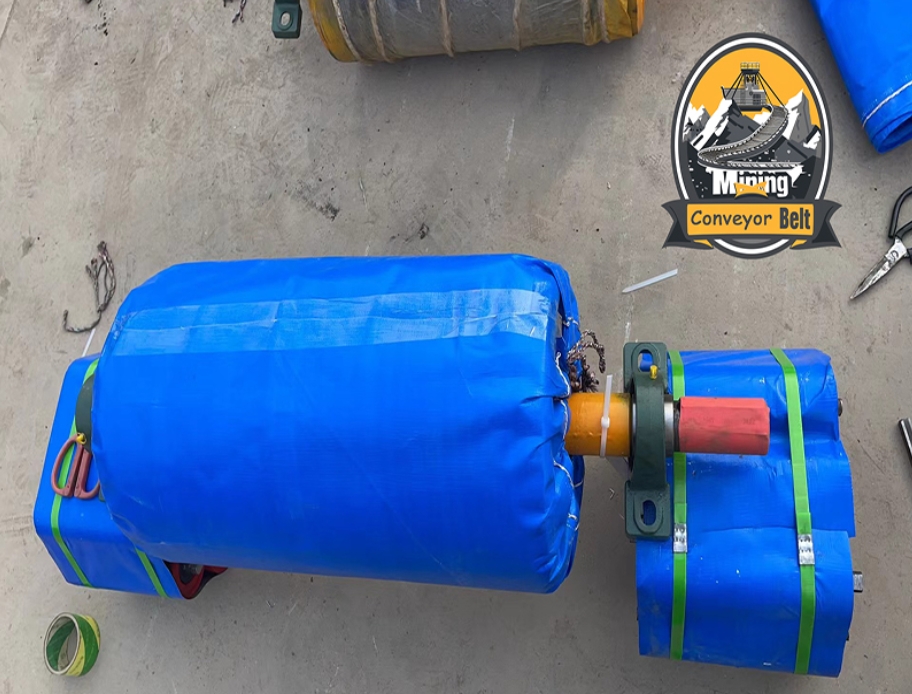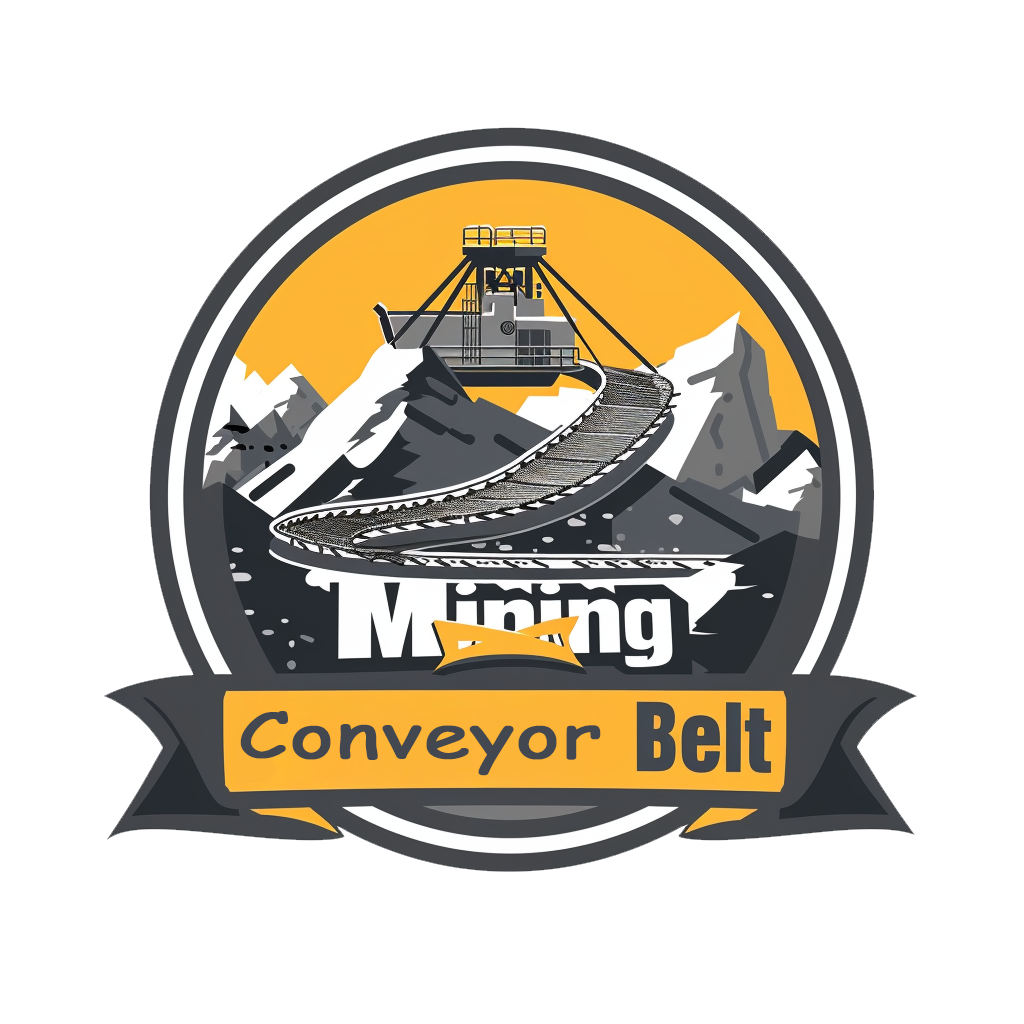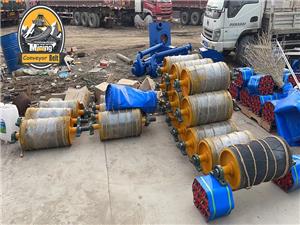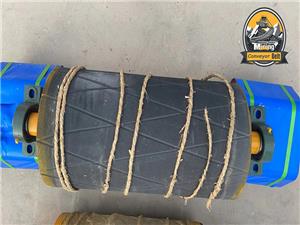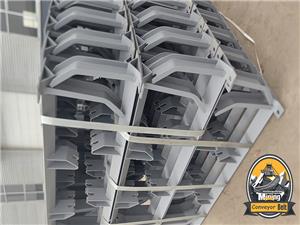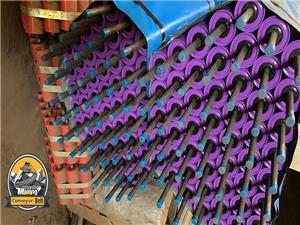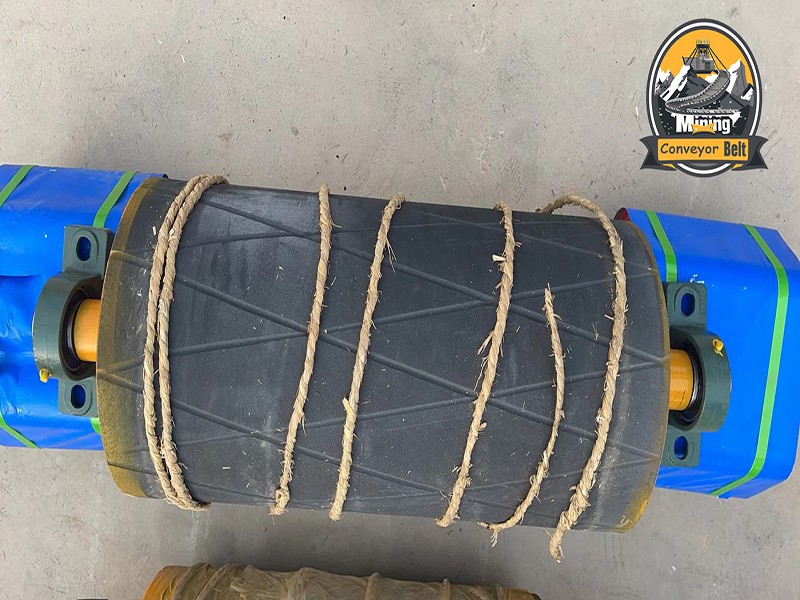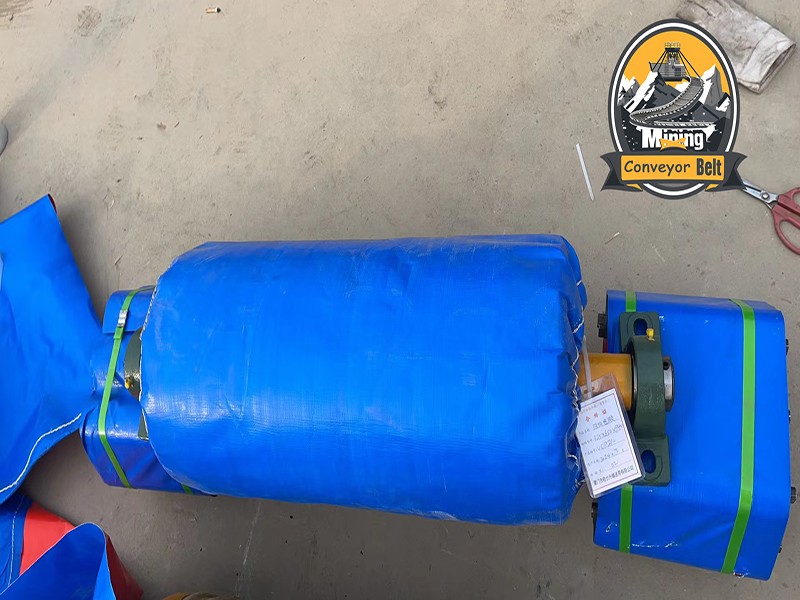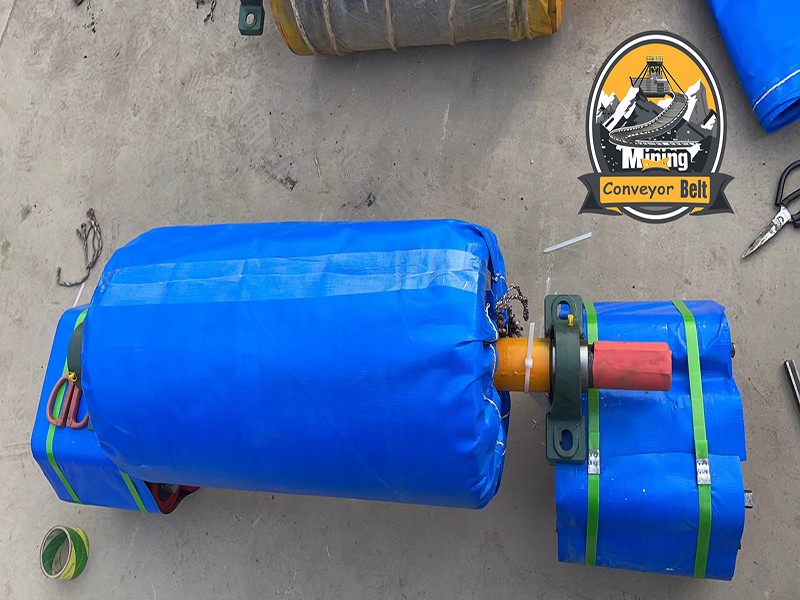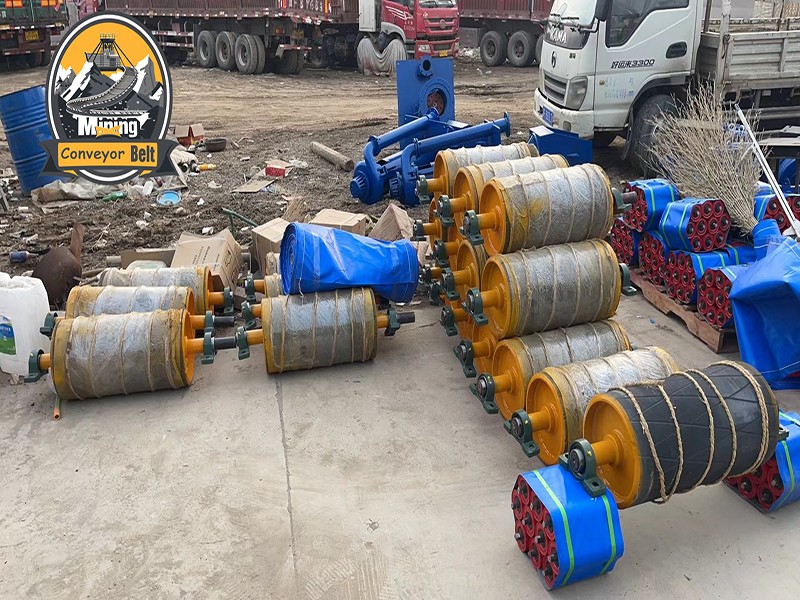
Rubber Coated Conveyor Belt Drum drum motor conveyor belt
Brand Xiamen Mining
Product origin Xiamen
Conveyor belt drums are indispensable components in belt conveyor systems, acting as the driving force and directional control for material transportation across various industries. From mining and metallurgy to food processing and logistics, the reliability and efficiency of conveyor systems heavily depend on the performance of these drums. This article will delve into the essential aspects of conveyor belt drums, addressing common questions and highlighting their critical roles.
Types and Functions of Conveyor Belt Drums
A complete conveyor system utilizes various types of drums, each designed for a specific function. The most common types include:
-
Drive Drum : Also known as the head pulley or drive pulley, the drive drum is the primary source of power for the conveyor belt. Located typically at the head or middle of the conveyor, it transmits power from the motor to the belt, driving the entire conveying operation. the belt conveyor relies on the friction between the tensioned belt and the drum to operate, making the drive drum the key component for delivering traction to the belt.
-
Redirecting Drum : These drums are crucial for changing the direction of the conveyor belt. Positioned beneath the belt and running in the opposite direction of the belt, they guide the belt to form a closed loop and can also increase the wrap angle around the drive drum. redirecting drums help prevent slippage between the belt and the drive drum, ensuring smooth operation.
-
Electric Drum: Integrating the motor and drive mechanism within the drum itself, the electric drum serves as a compact driving unit. It combines the functions of driving and changing the belt's direction, simplifying the conveyor system design.
-
Increasing Surface Area Drum : Designed to increase the contact area between the belt and the drive or redirecting drums, these drums enhance friction and prevent slippage, particularly in heavy-load applications.
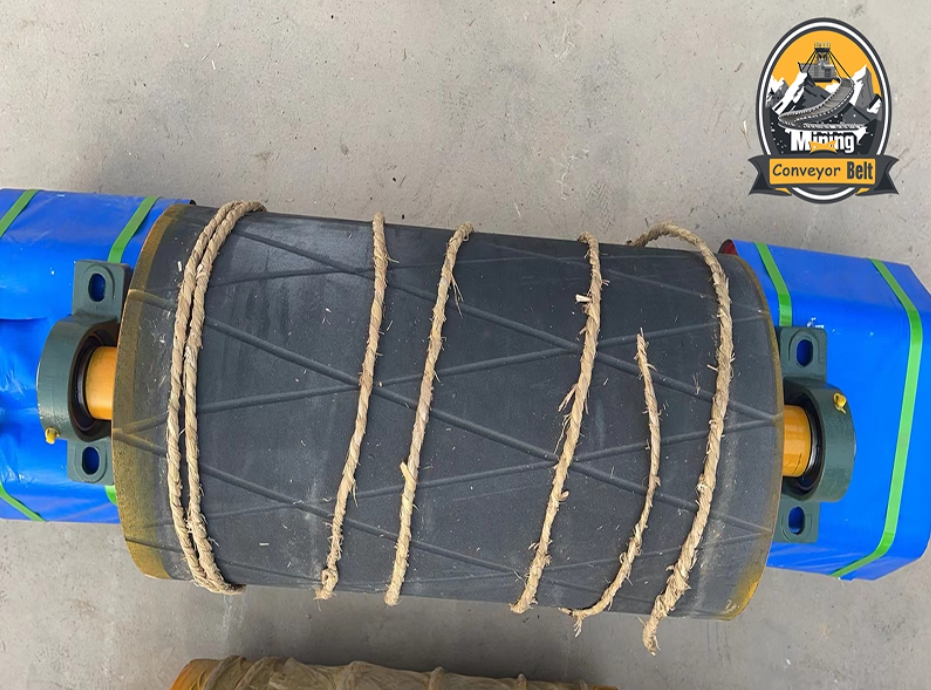
Common Questions About Conveyor Belt Drums
To better understand conveyor belt drums, let's address some frequently asked questions from a user's perspective:
Q: What are the common materials used for conveyor belt drums, and what are their advantages?
A: Conveyor belt drums are manufactured using various materials, each offering distinct advantages:
-
Carbon Steel : Known for its "High strength", carbon steel drums are robust and cost-effective, suitable for heavy-duty applications in mining and construction. However, they are "Corrosion-prone" and require regular maintenance to prevent rust.
-
Stainless Steel: Offering superior "Corrosion resistance" properties and "Easy to clean" surfaces, stainless steel drums are ideal for industries with stringent hygiene standards like food and pharmaceuticals. While more expensive, their durability and low maintenance make them a worthwhile investment.
-
Rubber : Rubber-coated drums provide excellent "Good elasticity" and "Anti-slip and wear-resistant" characteristics. They reduce material damage and noise, making them suitable for lighter industries like packaging and textiles. However, rubber is "Easy to age" and has temperature limitations.
-
Nylon : "Lightweight and high strength" nylon drums are easy to install and offer good "Wear and corrosion resistant" properties. Their self-lubricating nature reduces friction. While "high cost", they are beneficial in weight-sensitive applications like electronics manufacturing.
-
Aluminum Alloy : Combining "Lightweight and high strength" with good "Corrosion resistant" and "Good thermal conductivity", aluminum alloy drums are energy-efficient and suitable for industries like aerospace and automotive where weight and heat dissipation are critical. They are "high cost" and less suitable for heavy impact loads.
Q: How long can the rubber lagging on a drum last, and how can I extend its lifespan?
A: The lifespan of rubber lagging varies depending on factors like usage time, working conditions, belt material, drum speed, load capacity, and the material being conveyed. "Pulley lagging repairs account for 78% of total pulley repairs" - rubber lagging maintenance accounts for a significant portion of total drum maintenance. To extend the lifespan and reduce maintenance, consider:
-
High-Quality Rubber Lagging: Using premium rubber lagging materials like "YFTOP Rubber Sheet" which boasts superior wear resistance and strong adhesion due to its semi-vulcanized backing layer.
-
Proper Maintenance: Regularly cleaning from the conveyor belt and around the drums to minimize abrasion.
-
Optimized Design: Ensuring sufficient clearance between the drum bracket and the drum itself during installation to facilitate debris removal and prevent premature wear. As learned, "The design clearance between the drum bracket and the drum is too small...it is not convenient to deal with the debris in time, which is the main reason for the wear of the drum lining."
Q: What are some common issues in conveyor drum design and how are they addressed?
A: Two common issues are drum wear and weld failures:
-
Drum Wear : Often caused by insufficient clearance and debris accumulation, leading to rubber lagging Flaking. Solutions include:
-
Lengthening drum support to improve stability and integration with the conveyor frame.
-
Optimizing cleaning processes at the head pulley to minimize carryback.
-
Regularly cleaning the belt and ensuring adequate clearance around the drums.
-
Weld Cracking : Caused by incomplete weld penetration at the joint between the drum shell and end discs. Solutions involve:
-
Using specialized Tooling (fixtures) to ensure precise alignment and gap control during welding.
-
Controlling the gap between the Tube (shell) and Takeover (end disc) to 3-4mm using丝杠 (screws) on the fixture for optimal weld penetration.
Q: What roles do conveyor belt drums play in a belt conveyor system?
A: Conveyor belt drums are vital for several key functions:
-
Driving : Drive drums are the primary power source, transmitting motor power to move the belt.
-
Redirecting : Redirecting drums change belt direction for complex layouts.
-
Tensioning : Tension drums maintain belt tension to prevent slippage and ensure stable operation.
-
Supporting : Support drums prevent belt sagging and ensure smooth material conveyance.
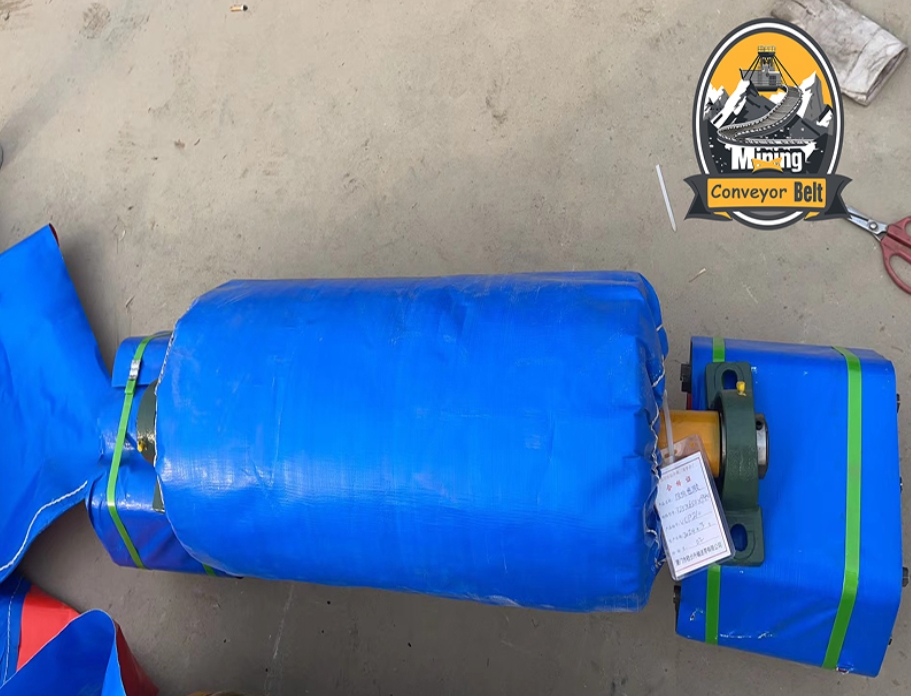
Conclusion
Conveyor belt drums are critical components that directly impact the efficiency and reliability of belt conveyor systems. Understanding their types, materials, common issues, and maintenance practices is essential for selecting the right drums and ensuring long-term, stable operation in material handling applications. By choosing high-quality drums and implementing proper maintenance, businesses can minimize downtime, reduce operational costs, and maximize the lifespan of their conveyor systems.
